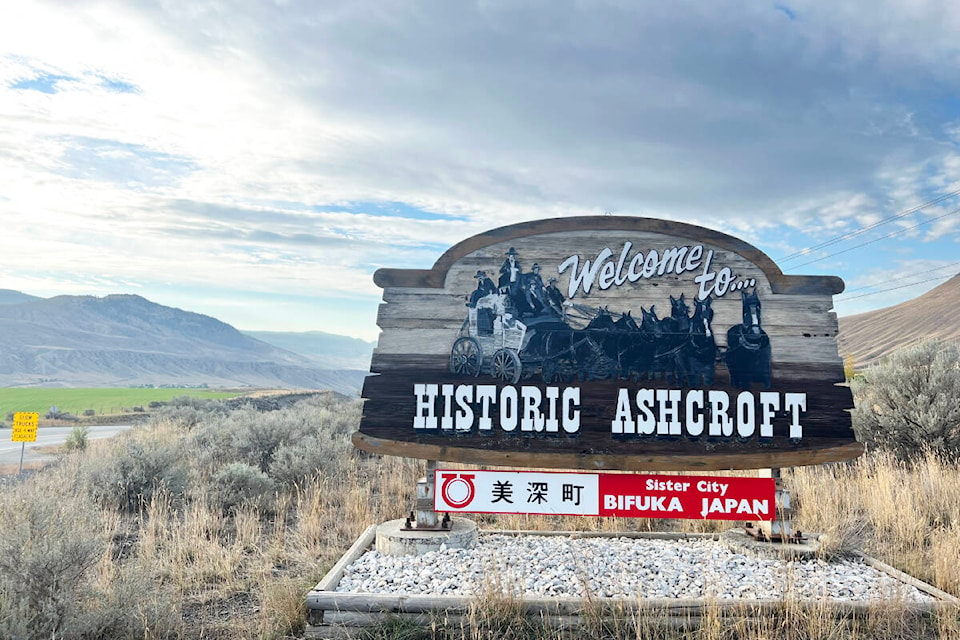If proposed changes to B.C.’s provincial riding boundaries go ahead, it will mean Ashcroft, Cache Creek, and Clinton will find themselves part of the huge Cariboo-Chilcotin riding, which goes north to Williams Lake and west to Anahim Lake.
The three communities are currently part of the Fraser-Nicola riding, and have been since the riding was created in 2009. Prior to that, all three were part of the Cariboo South riding — which also extended north and west to Williams Lake and Anahim Lake — from 2001 to 2009. Going even further back, Ashcroft and Cache Creek were part of Yale-Lillooet from 1966 to 2001.
Savona, Tobiano, and Cherry Creek west of Kamloops — currently part of the Kamloops-South Thompson riding — are also set to move to Cariboo-Chilcotin.
News of the changes came on April 3, when the BC Electoral Boundaries Commission released its final report, containing recommendations for B.C.’s provincial ridings. A preliminary report issued by the commission on Oct. 3, 2022 showed that very few changes were recommended for Fraser-Nicola, apart from adding the communities west of Kamloops, as well as Harrison and Kent in the southwest corner of the riding.
The proposal to move Ashcroft, Cache Creek, and Clinton from Fraser-Nicola has come as a shock to the riding’s MLA, Jackie Tegart, who lives in Ashcroft.
“My understanding is that this is the final report, and I’m a little disappointed that there was no indication in the first draft that this kind of significant change would happen in Fraser-Nicola,” she says. “The changes that have happened between the draft and the final report gave communities no opportunity to provide feedback.”
The final report notes that “We considered moving communities in the North Thompson (including Barriere, Clearwater and Wells Grey Provincial Park) into the Cariboo-Chilcotin riding to better balance populations in the area. However, we recognized that access to larger centres in Cariboo-Chilcotin requires travel over a mountain pass on secondary highways, and that these communities rely on Kamloops as their service centre.
“Instead, we propose expanding this riding south to include Cache Creek and Ashcroft, which are now located in the Fraser-Nicola electoral district. These communities share the Highway 97 transportation corridor with communities in Cariboo-Chilcotin like 100 Mile House and Williams Lake. This proposal also reduces the large geographic size of Fraser-Nicola. We believe that these boundary adjustments better reflect our guiding principles.” The report adds “We propose moving the rural areas to the west of Kamloops into the Cariboo-Chilcotin riding to balance their populations and accommodate projected population growth in Kamloops.”
“I don’t know what the right way to do it is, but in the day and age we’re living in it should be more than just a numbers game,” says Tegart.
“It should include accessibility to your MLA, so did anyone look at that, at how do you get to their office and how do they get to you and how many hours of driving does that take, because there’s an assumption we all have internet and in rural B.C. we don’t. It’s about traditional trading and where people do their business, and the fact that people feel part of a riding. We should respect that when looking at making changes.”
Tegart adds that as far as she can determine, the time to suggest any further changes to the commission has passed. Had the commission made it known in October what was coming, she would have had a whole group get together to make presentations.
“We were happy to be left alone and have the few changes they were suggesting, so this is quite a bit of a surprise. I’d suggest that if people are unhappy with anything, it should be with the process. Significant changes happened between the draft and the final report that gave communities no opportunity to provide feedback.”
She notes that in addition to access to an MLA being critically important, there is a need to look at why people don’t vote.
”We’re trying to increase the number of people who are being active in the political process and voting, and Fraser-Nicola has never, ever been left alone. People feel part of something when they’re part of a riding, but when that riding changes all the time they feel a disconnect.”
Tegart says she appreciates the work the commission did, and the difficulty it had in trying to look at how boundaries could be adjusted so as not to lose any rural ridings above Hope. “Based on the criteria that the commission was given this is a very, very difficult job, but perhaps it’s time to review the process.
“We’ll work to make sure that constituents have a fair and equitable voting process, that they know where the boundaries are and have access to their MLA. We were in this place previously, and if this is what it is then we’ll work with what we’re given and work really hard.”
If the proposed changes go ahead, the province will also have six new ridings, taking the total number of from 87 to 93. The new ridings would be in effect as of the next provincial election, which is scheduled to take place on Oct. 19, 2024.
To read the full final report from the BC Electoral Boundaries Commission, and view maps of all the proposed ridings and changes, go to https://www.bcebc.ca/final-report/.
READ MORE: Changes proposed for new Kamloops-Thompson-Nicola riding
Do you have a comment about this story? email:
editor@wltribune.com
Like us on Facebook and follow us on Twitter.
